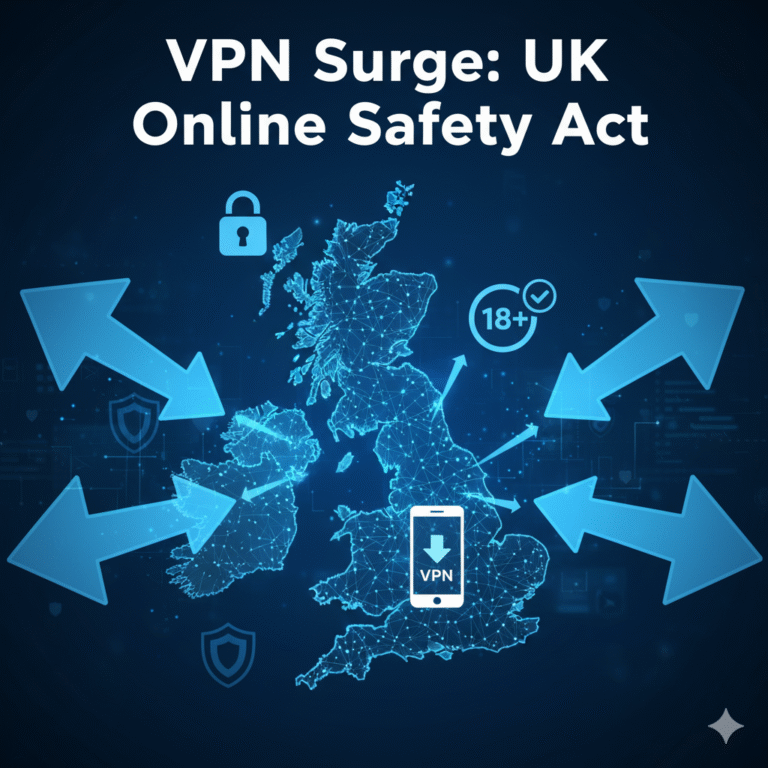In a bold move aimed at redefining VPN infrastructure, Surfshark has launched what it describes as the world’s first 100 Gbps VPN servers, marking a massive leap from the prevailing 10 Gbps per-server standard. While individual users won’t see “100 Gbps speeds” on their devices (due to ISP or hardware limits), this upgrade dramatically increases server capacity, reduces congestion under load, and positions Surfshark as a forward-thinking leader in the VPN space.
This article delves into what these new 100 Gbps VPN servers mean for everyday users, how they compare to industry norms, and whether this change truly impacts performance, reliability, and privacy.
Why 100 Gbps Servers Matter (But Not in the Way You Think)
Capacity vs. Individual Speed
When we talk about a “100 Gbps VPN server,” it refers to the maximum data bandwidth the server’s network interface can handle in aggregate. It does not mean that any single user will achieve 100 Gbps throughput. The practical benefit lies in reducing congestion, supporting more simultaneous users, and improving stability during traffic spikes.
Reducing Bottlenecks Under Load
One of the perennial issues with shared VPN servers is that when many users connect simultaneously—especially during peak hours or in densely served locations—server capacity becomes a bottleneck. By widening the “pipe” (so to speak) to 100 Gbps, Surfshark aims to reduce these bottlenecks, ensuring smoother experiences even when server load is high.
Future-Proofing for Emerging Use Cases
As streaming evolves into 4K, 8K, VR, and cloud gaming, bandwidth demands continue to grow. Surfshark’s CTO has emphasized that 100 Gbps hardware lays the groundwork for next-gen usage, including simultaneous 4K video, large OS updates, and real-time interactive workloads.
Deployment Details & Early Stages
Amsterdam Launch
The first 100 Gbps VPN servers are being deployed in Amsterdam, Netherlands, likely leveraging the robust interconnectivity of AMS-IX (Amsterdam Internet Exchange) to handle massive traffic loads. This location acts as a proving ground before wider rollout.
Testing Phase
Surfshark has described the deployment as initially experimental — only a select number of servers are live with the 100 Gbps infrastructure. ( The full global rollout timeline remains unspecified, though the move signals a broader ambition to upgrade server fleets in other geographies.
Supporting Infrastructure
Surfshark claims the upgrade leverages not just bigger pipes, but smarter routing, faster encryption paths, and improved load distribution. The result is expected to be more stable performance and fewer speed dips under high usage.
Expected Impact on Users
More Stable Speeds, Especially at Peak Times
Users might notice fewer speed drops during heavy usage windows. Because each server can carry more throughput, performance degradation is less likely. For households doing 4K streaming, big file uploads, or cloud backups, this could translate to fewer buffers or slowdowns.
Not a Guarantee of Higher Speeds
If your ISP, home router, or device caps you at, say, 500 Mbps or 1 Gbps, even a 100 Gbps VPN server can’t override those limits. The upgrade helps reduce constraints on the server side, not the user’s last-mile link.
Encouraging Industry Upgrades
This move may push competitors to rethink infrastructure. Most VPN providers currently advertise 10 Gbps servers. Surfshark’s leap could reset expectations and drive broader adoption of higher-capacity hardware.
Consistency During Growth
As VPN usage continues to rise globally, scalability becomes essential. Surfshark’s investment anticipates future growth and aims to avoid congestion that often plagues older VPN deployments.
Comparisons & Expert Thoughts
Industry Standard Today: Many VPN services currently operate with 1 Gbps or 10 Gbps server backbones. Surfshark’s upgrade is a tenfold jump above the commonly used 10 Gbps.
TechRadar’s View: TechRadar noted that although 100 Gbps increases server capacity, it doesn’t necessarily equate to faster personal speeds — the benefit lies in minimizing congestion.
VMblog’s CTO Quote: Donatas Budvytis, CTO at Surfshark, explained that “with 10 times the headroom of 10 Gbps, we can reduce congestion and maintain consistent speeds even during high traffic spikes.”
Learn more than Windscribe Adds Post-Quantum WireGuard
Potential Risks & Limitations
Limited rollout — currently only in Amsterdam. Users elsewhere may not see benefits until expansion.
Other bottlenecks still matter — ISP throttling, WiFi interference, routing conditions, and protocol overhead will still affect final speeds.
Cost & infrastructure overhead — such upgrades require big investment in hardware, fiber, and cooling. Scalability may be slower in regions with weaker infrastructure.
Marketing vs. real gains — some users may misinterpret “100 Gbps VPN servers” as a claim of personal speeds, leading to unrealistic expectations.
Conclusion
Surfshark’s introduction of 100 Gbps VPN servers represents an ambitious and technically forward-looking leap in VPN infrastructure. While individual users won’t magically see multi-gigabit speeds just from this upgrade, the true value lies in capacity, stability, and scalability. By reducing server-side congestion, Surfshark aims to deliver a smoother, more consistent VPN experience, especially during high-demand periods.
This move also sets a new benchmark in the industry and may compel VPN competitors to rethink their hardware strategies. As the rollout expands beyond Amsterdam, the real-world impacts will become clearer — but as of now, Surfshark is making a bold statement: it intends to lead the high-throughput era of VPNs.



